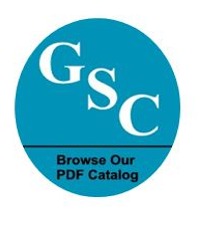|
|
||||||||||||||||||||||||||||||||||||||||||||||||||||||||||||||||||||||||||||||||||||||||||||||||||||||||||||||||||||||||||||||||||||||||||||||||||||||||||||||||||||||||||||||||||||||||||||||||||||||||||||||||||||||||||||||||||||||||||||||||||||||||||||||||||||||||||||||||
|
3M Safety 3M Speedglas Allegro Industries Ansell AOSafety Brady Bullard Coleman Cortina Safety CREWS DBI/Sala DuPont |
E-A-R Soft Ergodyne Fibre-Metal Fibre-Metal FMX Guardian Equipment Guardian Fall Protection Honeywell Analytics Gas Meters Honeywell Safety Howard Leight Jackson Products Justrite Manufacturing |
Kimberly-Clark MCR Safety Markel Industries Magswitch Magnets Mechanix Wear Memphis Gloves Miller Fall Protection Moldex MSA Mustang Survival - Water Products North Safety |
OccuNomix Pelican Peltor Protecta Servus Norcross Sqwincher Sperian Tillman UVEX Weldas Wilson Industries Willson Eyewear |
||||
|
|
|||||||
| Manufacturer Video Library Links | |||||||
|
3M
Click desired product category then open the PDF File to
view the video from inside the PDF file. Miller Fall Protection MSA Portable Gas Detection MSA Fall Arrest |
Allegro Industries
Click on "Video Support" tab on the
top, then select product category. Honeywell YouTube Video Library Moldex Capital Safety (DBI/Sala & Protecta) Fend-all PureFlow 1000 Maintenance Video |
||||||
| Vintage Safety Videos | |||||||
| 1948 Respirator Hygiene by the British NHS | 1951 Our Scientists Know What They are Doing | ||||||
| 1930s Boulder Dam High Scalers | Golden Gate Bridge Construction Safety | ||||||
| 1955 Smallpox Vaccine | Dusting Troops w/Pesticides - 1950s | ||||||
| Worker Loses Leg in Sawmill | |||||||
| To see more of these vintage videos you can view Mark D Catlin's web site. | |||||||
|
|
|||||||
| Government & Other Links | |||||||
|
|||||||
|
|
|||||||
| Safety Guidelines | |||||||
|
Facility Safety: It is the duty of the safety officer, facility engineering and others to provide the safest environment for employees. This is done by a host of equipment and devices. Here are a few:
|
Safety
Training & Plans: Designing plans and training programs need to be signed off by the management, facility maintenance, engineering and safety officer.
|
||||||
|
|
|
||||||
|
PPE Procedures: These are procedures used in the care and use of safety equipment.
|
OSHA Exposure Levels:
These safety guides and resources are to help the safety professional in making his or her job easier and are provided to help you make an informed decision for your safety purchases. These are some, but by no means all of the considerations needed for any organization. ultimate responsibility for the safety of your organization falls to the safety officer, facility engineering & maintenance, and finally management working together as a team. |
||||||
|
|
|||||||
| 719-761-5814 | |||||||

